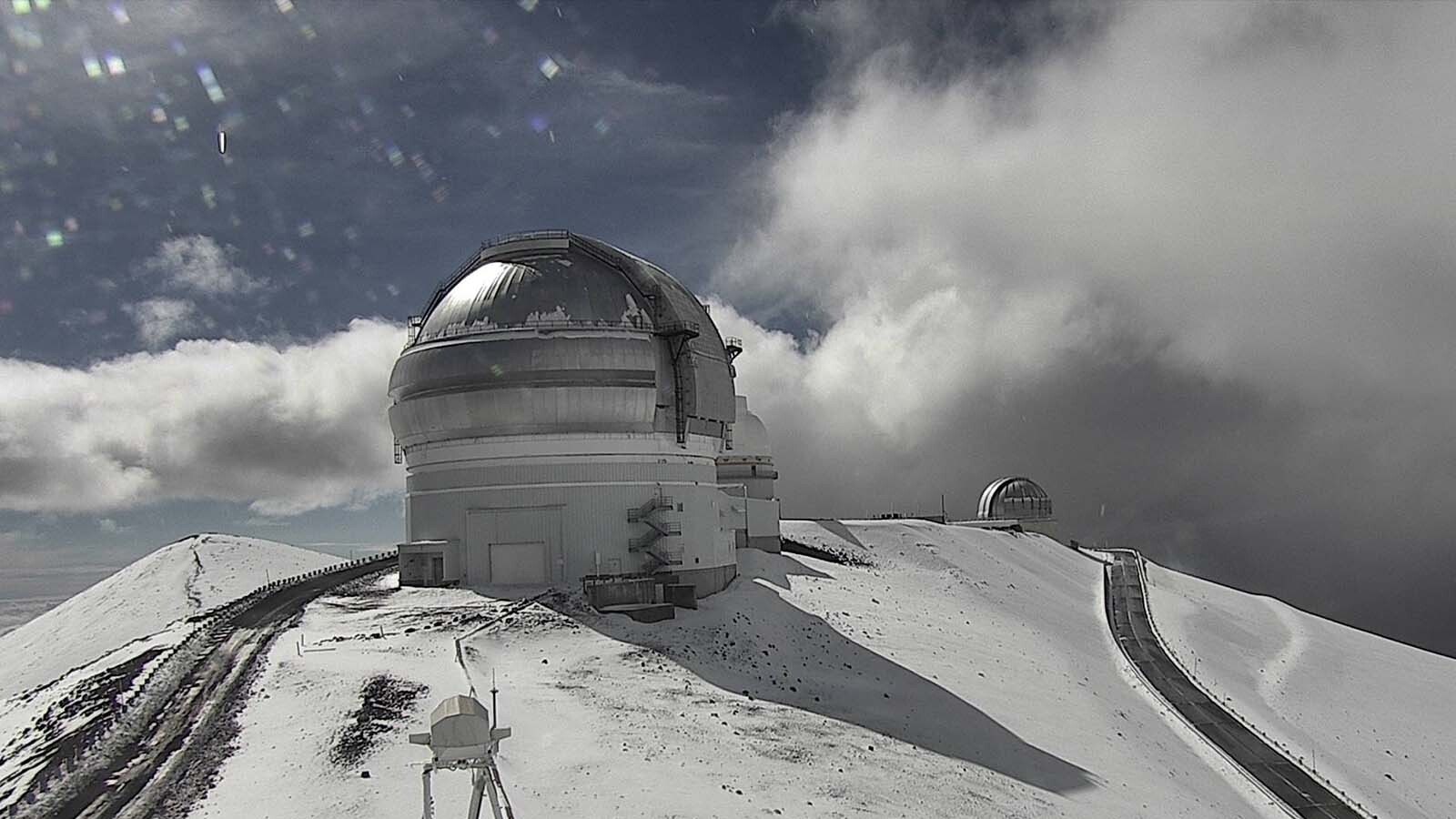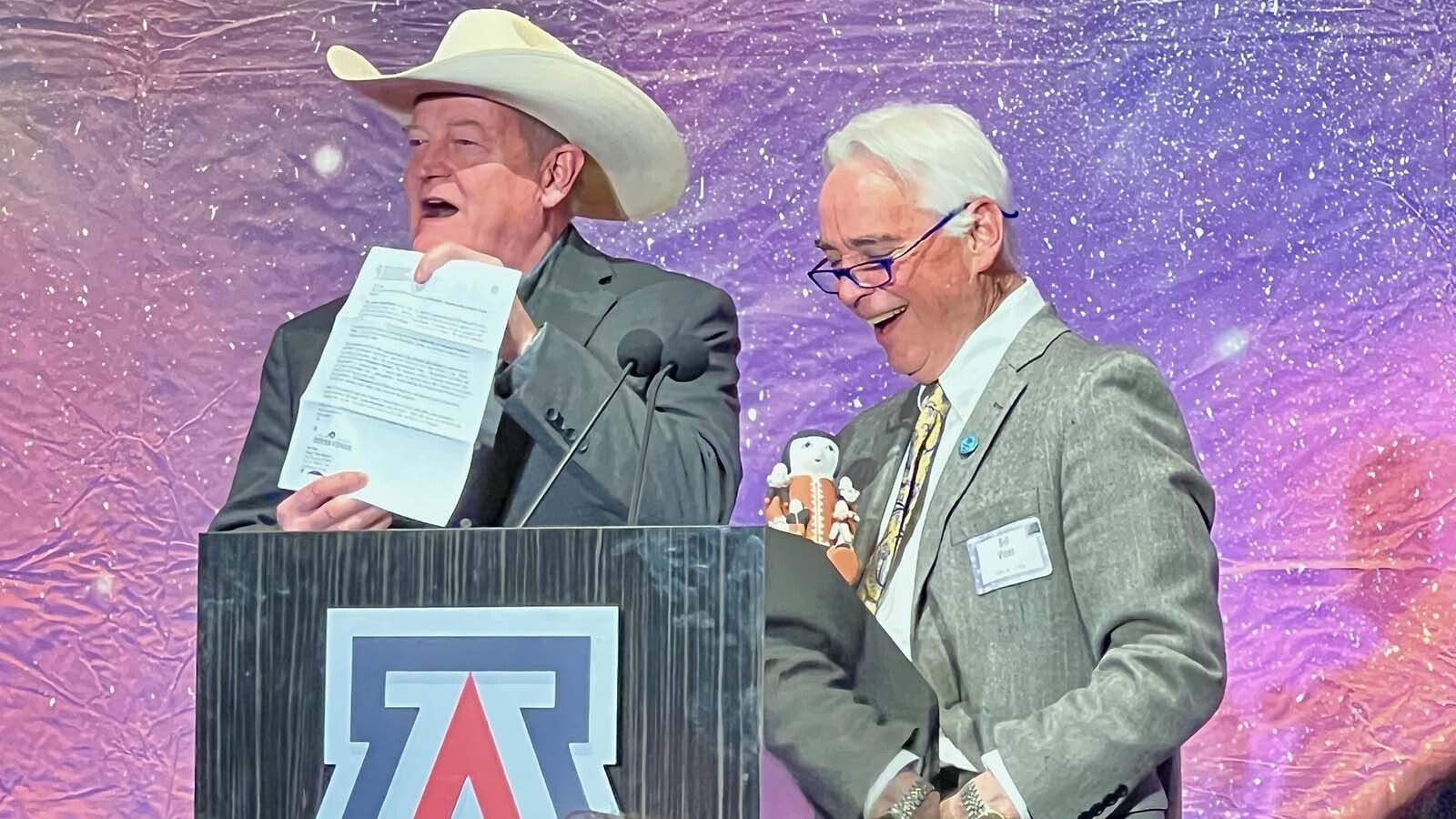The icon of Wyoming that people instantly recognize is a cowboy riding a bucking horse. The roots of that image come from Sheridan.
George Ostrem took his horse Red Wing to France in World War I with the Wyoming National Guard. While there, Ostrem painted a picture of Red Wing on the company drum and it became the symbol of the 148th Field Artillery.
This was the first cowboy image of Wyoming, recognized across France and Germany during the war.
But it is another horse that is the icon of Wyoming and associated with the image on the Wyoming license plate and with the University of Wyoming Cowboys: Steamboat, a black colt with three white stockings foaled on the Frank Foss Ranch near Chugwater in 1896.
Jimmy Danks was the first man to fork the horse. Like he did with other Swan Land and Cattle Co. horses, Danks saddled the black and swung aboard.
“Jimmy didn’t handle Steamboat long before he knew he had an outlaw on his hands,” brother Clayton Danks said.
Added Jimmy: “I guess he thought bucking was his business.”
Wild From The Start
Jimmy was the top hand on the Swan outfit’s Two Bar Ranch and was there when they threw the colt to the ground for castration.
They bumped his head a little too hard, breaking a bone in his nose that Sam Moore cut out. From that time forward the horse had a distinctive whistling sound when he bucked.
And Jimmy Danks gave him the name Steamboat.
Two Bar cowboys tried to ride the horse, but it was soon clear that Steamboat was not destined for the Swan Range as a cow pony. Instead, when Duncan Clark rode over from John Coble’s Polka Dot outfit to see if the Swan had any bucking horses they wanted to sell, the cowboys on the Swan told him about Steamboat.
Clark bought Steamboat for Coble’s bucking string, and the horse wound up in the rodeo arena, and later as the star of the Irwin Brothers Wild West show, a venture of C. B. Irwin and his brother Frank.
Who’s Riding Steamboat?
Wyoming’s most enduring symbol is our cowboy license plate.
It is an old, and ongoing argument across Wyoming as to the rider depicted on the license plate.
If you go to Pinedale country, old timers may tell you it’s Guy Holt. In Lander, sentiment leans toward Stub Farlow. In Laramie, the name most often mentioned is Jake Maring.
One thing that is agreed upon is Steamboat is the horse.
In 1936, Wyoming Secretary of State Lester C. Hunt contracted with Denver artist Allen True (whose family has long roots in Wyoming) to design the license plate emblem.
“I have in the intervening years, been pleased that I had Mr. True do the drawing rather than use a photograph of a bucking horse, in that Mr. True, through his knowledge of art, understood what design could be stamped out in steel and retain its identity at some distance,” Hunt would say. “He therefore made the drawing with only one bridle rein, and only one front left foot on the horse, and with only one rider’s foot.”
For his effort, True was paid $75.
That drawing, has become world famous. It is a legacy for a great bucking horse and represents Wyoming cowboys far and wide.
But what about some of those cowboys?
Danks was one of the top hands on the Swan Land and Cattle Co’s. Two Bar Ranch, and that is saying something during an era when the cowboys working on Wyoming’s ranches spent most of the time in the saddle.
Jimmy was the first to ride Steamboat since a part of his job was to break horses for the Two Bar. He is known to have saddled and attempted to ride Steamboat five times, all out on the ranch.
He soon realized Steamboat had too much buck to ever make a range horse.
By all accounts Danks was a better cowboy than his brother Clayton, but Clayton became better known since he won a world championship riding Steamboat in Cheyenne in 1909. Clayton had also won the saddle bronc championship at Cheyenne in 1907.
One old timer said of Jimmy Danks, “He will tell you himself that he could outride Clayton. However, he did not take rodeoing up for a livelihood as Clayton did. His cowboying was out on the range.
“He was not making his horses buck to get practice. … He got his practice in his every day work.”
In 1903 Jimmy Danks did compete at Cheyenne Frontier Days, riding Little Tex to a fourth-place finish.
That year Holt, a cowboy from Hecla (just west of Cheyenne), won Cheyenne riding Young Steamboat, the horse that was the half-brother of the older, more famed Steamboat.
Also, in 1903, Holt competed at the Festival of Mountain and Plain in Denver, winning the championship there. And he cemented his cowboy work for the year with a ride on Steamboat at the Albany County Fair that September.
Holt finished the competition in second place, behind Ed Danks, a brother to Jimmy and Clayton. But the ride is immortalized with a photograph taken by University of Wyoming Professor B. C. Buffum that is iconic.
That classic bucking horse photograph of Holt on Steamboat would be used when the University of Wyoming developed its cowboy logo in 1921.
Holt’s ride on Steamboat was not perfect.
While “Steamboat looked fat and saucy,” Holt was riding a borrowed saddle and as any bronc rider might tell you, that’s a recipe for disaster. He lost his right stirrup on the second jump, and according to newspaper accounts, “At the third jump grabbed the horn and pulled leather for all that he was worth.”
No 8-Second Rule
In those days, grabbing a horn didn’t disqualify a cowboy, and there was no 8-second rule. They rode until the horse stopped bucking, or they hit the ground.
Holt was certainly shook up after his ride on Steamboat, but the next day he mounted a horse called Teddy Roosevelt in a head-to-head competition with Clayton Danks.
Holt rode well, whipping his mount repeatedly and showing no sign of being unseated. But in the view of the contest judges, Danks rode better that day and won the competition riding Steamboat “with his hands down and a strong grip on the hackamore rope,” according to newspaper accounts.
The best accounts of Steamboat’s career in the rodeo arena (a place often defined in that era as an open field surrounded by cowboys on horseback forming a perimeter) are associated with the horse’s contests at Cheyenne Frontier Days.
It is sometimes claimed that no cowboy rode Steamboat. But that’s not true. Jimmy Danks did, and so did Clayton Danks and Holt.
Plus, there were others, including these CFD Saddle Bronc Champions: Fred Bath, the 1898 champion; Thad Sowder, 1900 champion; Otto Plaga, 1901 winner; Harry Brennan, 1904 champion; Hugh Clark and Sam Scoville, co-champions in 1905; and Scoville won again in 1910; and Dick Stanley, winner in 1908.
Stub Farlow, the Lander cowboy whose name is often associated with the image on the Wyoming license plate, was an outstanding rider, but he never had a chance to ride Steamboat.
Jake Maring rode Steamboat in Laramie in 1905 and again in 1911. On that second ride, he stayed atop the horse riding him to a standstill, but later said he “couldn’t eat for two weeks after that because of the shaking I got.”
Maring had a third shot at the black horse later that fall. Once in the saddle, he said, “Let him go.” Steamboat took off with a snort, soon tossing Maring into the dirt.
The cowboy would later say, “ I did nothing but ride bucking horses for all my life. I can conscientiously say Steamboat was the hardest bucking horse I was ever on.”
Candy Moulton is the co-author of “Steamboat: Legendary Bucking Horse,” published by High Plans Press in Glendo, Wyoming.
Candy Moulton can be reached at Candy.L.Moulton@gmail.com.








